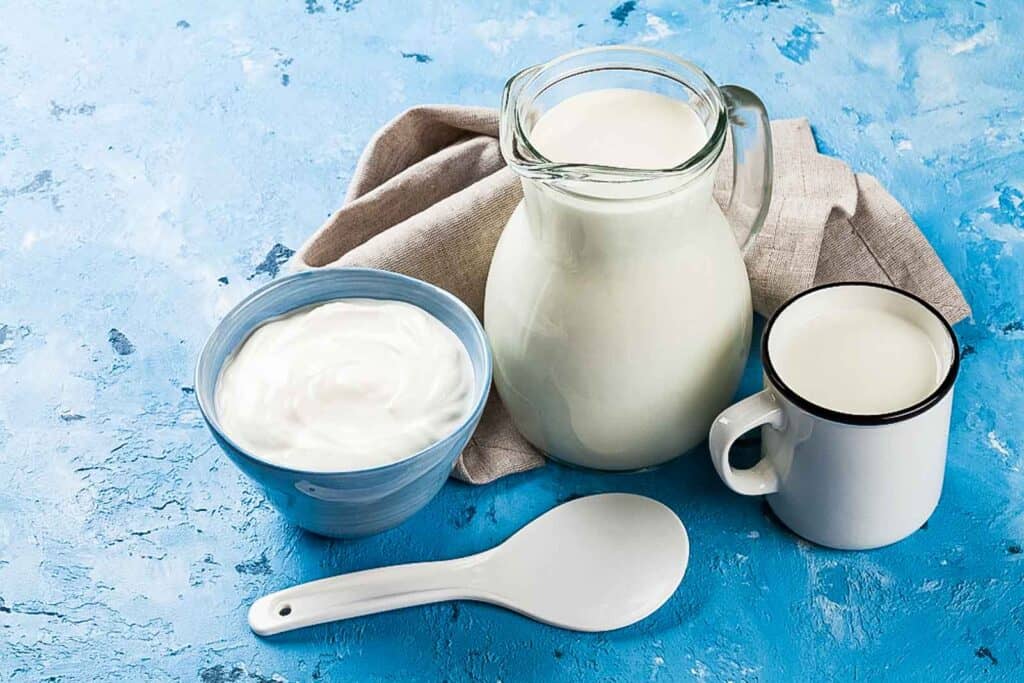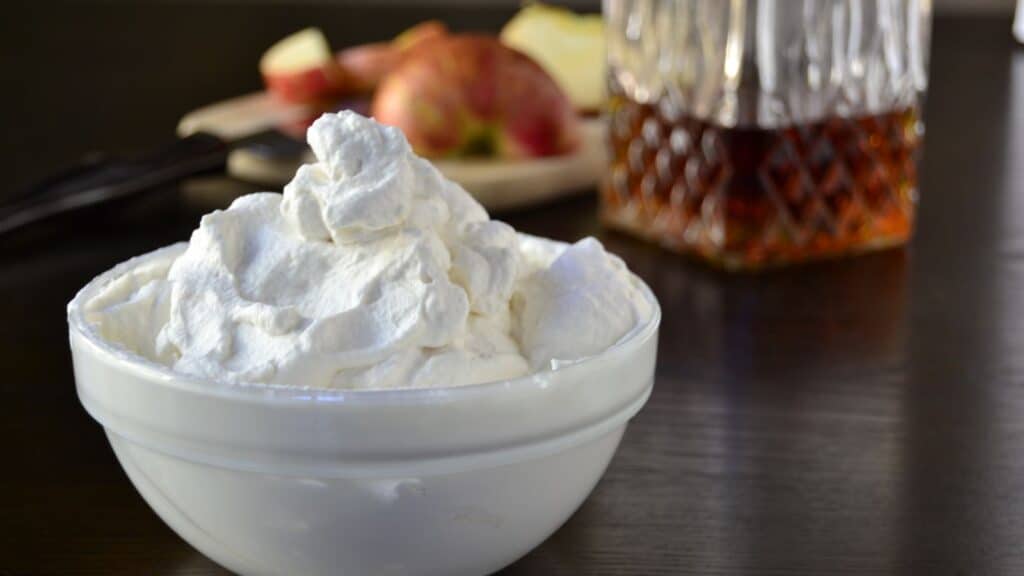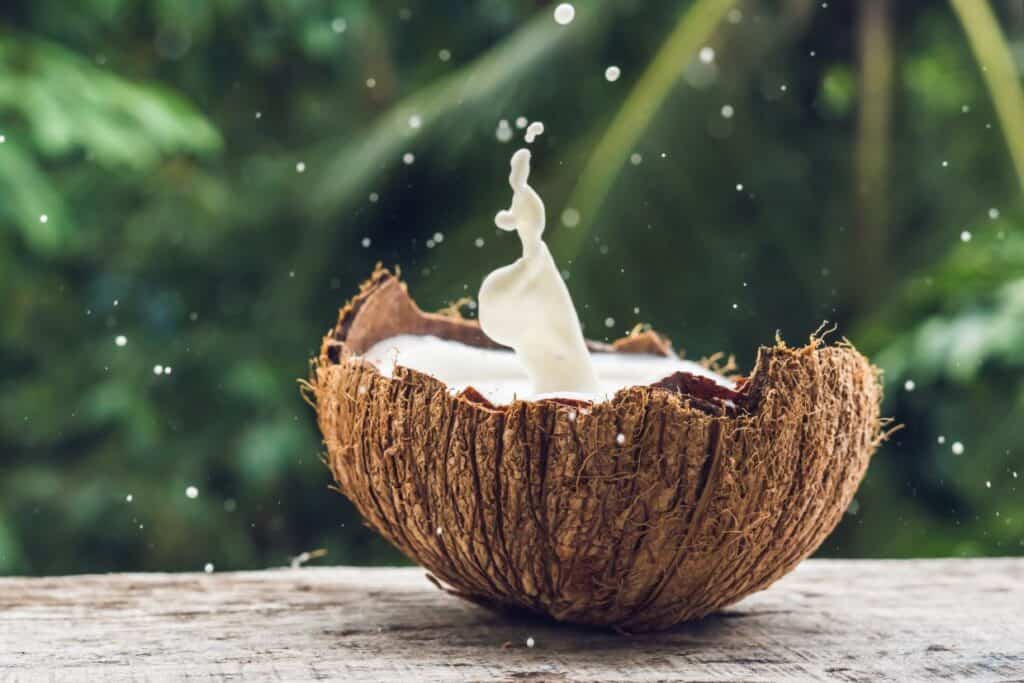Light cream, heavy cream and cashew cream are just a few examples of the many types of creams you’ll find in modern recipes today. Each cream, with its unique characteristics, has the ability to transform your food from ordinary into a decadent dining experience. Whether you are cooking or baking, knowing what to use and when can significantly impact your final recipe results.

Dairy creams
Not all dairy-based creams are alike. Some recipes call for half-and-half, while others demand heavy whipping cream. What’s the difference? The fat content. From half-and-half up to heavy cream, each of these dairy-based examples has varying levels of fat content, making some ideal for thickening sauces while others can transform into a light and airy whipped cream.
Half-and-half
Half-and-half is a mixture of milk and cream with a 10 to 18% fat content. It’s thinner than light cream and won’t whip. Half-and-half is commonly added to coffee and tea to provide a richer mouthfeel without being too heavy. It’s also used in recipes where you want something creamier than milk but not as thick as cream.
Light cream
Light cream has a fat content of around 18 to 30%, making it thinner than heavy cream and whipping cream. It’s not suitable for whipping but is excellent for adding a touch of creaminess to coffee, light soups and sauces. Some baking recipes call for light cream, especially when a thick consistency is not required.

Whipping cream
Whipping cream, with a fat content ranging from 30 to 36%, is just below heavy cream. When whipped into whipped cream, it forms softer peaks that people often use to top pies and cakes. Whipping cream can also be added to soups and sauces, although you may need more to provide the same rich results as heavy cream.
Heavy cream
Heavy cream, also known as heavy whipping cream, has the highest fat content of mainstream dairy creams available in an average U.S. grocery store. Typically between 36% and 40% fat content, this cream is perfect for whipping into stiff peaks or making creme brûlée. When making ice cream with heavy cream, the high-fat content adds enough structure to create a decadent mouthfeel without using eggs, like in this blueberry ice cream recipe. When added to soups or sauces, a little goes a long way toward transforming a dish into a decadent creamy texture.
“I prefer heavy whipping cream for whipped cream because it holds its shape better than regular whipping cream. It whips up firm and keeps peaks. For the best whipped cream, chill your bowl and beaters before whipping heavy cream. This helps it whip up faster and hold its shape better.”
— Jere’ Cassidy, One Hot Oven
Non-dairy creams
Walk through the non-dairy section of your average grocery store, and you will see various plant milks. Look a little closer, and you will see that many of these non-dairy milk brands also offer plant-based alternatives to traditional dairy creams. The non-dairy cream market is newer but growing, so these options aren’t yet as standardized as their dairy-based cousins. However, most brands are pretty good at advertising when and how to use their products in a dairy-free kitchen.
Since most recipe developers want to cater to a large audience, they tend to stick to widely available ingredients. When it comes to non-dairy creams that provide similar results to dairy options, coconut cream and cashew cream are the most common alternatives.
Coconut cream
Coconut cream is made from the thick, creamy part of coconut milk. It’s high in fat, usually around 20 to 30%, which gives it a rich texture similar to a light cream. You can use coconut cream in curries, soups and desserts. When refrigerated overnight, you can whip a can of coconut cream to soft peaks to make a luscious dessert topping. Remember that it tastes like coconut, so it works best in recipes where this flavor complements other ingredients.
“Being dairy-free, coconut cream is my go-to to make anything taste rich and indulgent. Because of its high-fat content, it works like a heavy cream and can be used in pasta, baked goods and even whipped into a whipped cream to top dessert!”
— Shelby, Fit as a Mama Bear

Cashew cream
Cashew cream is made from soaked and blended cashews, typically in a ratio of one cup of cashews to three-quarters of a cup of water. It is an excellent substitute for heavy cream and can be used to make pasta sauces, salad dressings or anywhere else you want to add a rich creaminess. Its smooth texture and fairly neutral, slightly nutty flavor make it a great dairy-free sauce for both savory and sweet applications. The fat content varies depending on how much water you blend with the nuts, so adjust as needed.
Specialty creams
Specialty creams are unique in their textures, flavors and recipe applications. While they are more common in the United Kingdom, you should be able to find them in high-end or specialty grocery stores in the U.S.
- Double cream has a 45% or higher fat content. Decadent and rich, this type of cream is often poured over desserts. When added to soups and sauces, only small amounts are needed.
- Clotted cream has a 55 to 60% fat content. Its rich, almost butter-like texture makes it luscious and spreadable. In the UK, it’s served with scones and jam for afternoon tea and can be used to top pies and crumbles.
Using different types of creams in your kitchen
With such a wide variety of creams available on the market today, there are options for enhancing the flavor and texture of your dishes that fit every palate. Whether it’s the richness of heavy cream or the nuttiness of cashew cream that fits you best, each option brings its own characteristics to the table. Knowing when and how to use each of them will help to expand your culinary creations from ordinary to extraordinary.
Renee N Gardner is the creative mastermind behind Renee Nicole’s Kitchen, a recipe blog based on seasonal ingredients, dedicated to helping home cooks build their kitchen confidence to become home chefs. When Renee isn’t writing, developing recipes or photographing food, you’ll find her in the garden, traveling or enjoying the outdoors with her husband, son and two dogs.